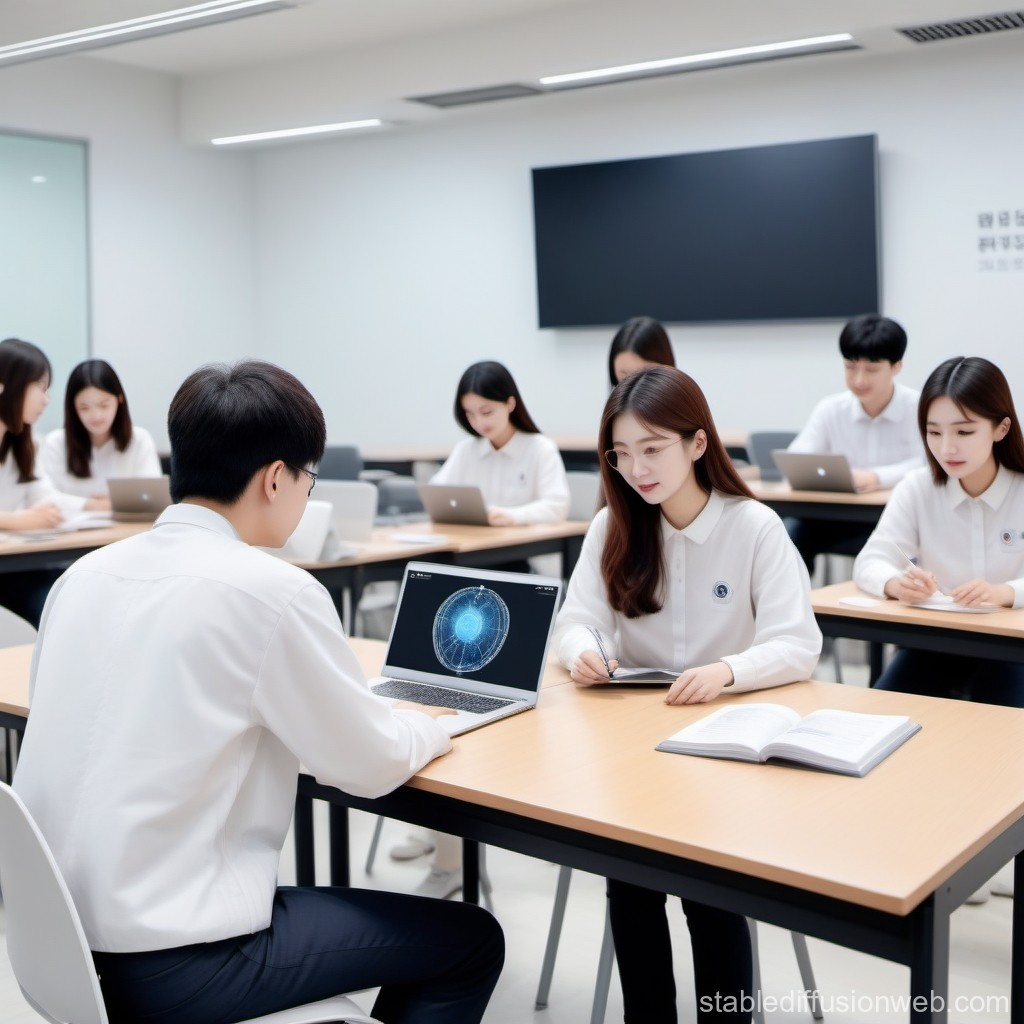AI-powered personalized education is quickly changing the way students learn and teachers teach. Artificial intelligence is no longer just a futuristic idea. It’s already being used in classrooms, tutoring platforms, and learning management systems. These smart tools can tailor lessons, track progress, and adjust to each student’s pace and style of learning.
This shift holds a lot of promise. It could mean more effective learning, better student engagement, and improved outcomes. But it also raises important ethical concerns. Questions about data privacy, bias, fairness, and the role of human teachers are becoming harder to ignore.
In this article, we explore both the exciting prospects and the serious ethical challenges of AI-powered personalized education.
What Is AI-Powered Personalized Education?
AI-powered personalized education refers to the use of artificial intelligence systems to customize learning experiences for individual students. Unlike traditional education, which often follows a one-size-fits-all model, personalized education adapts content, pace, and assessments to fit each learner’s needs.
Here’s how it typically works:
- AI tools collect data from students—like test scores, time spent on activities, and how they respond to different types of content.
- Algorithms analyze this data to identify patterns and learning gaps.
- The system then adjusts the learning path in real time, offering targeted support or challenges as needed.
This kind of personalization can help struggling students catch up and allow advanced learners to move ahead at their own pace.
How AI Is Being Used in Education Today
AI tools are already present in many educational settings. Here are some examples:
Intelligent Tutoring Systems
Programs like Carnegie Learning or Squirrel AI act as virtual tutors. They provide step-by-step guidance and adapt questions based on how students perform.
Adaptive Learning Platforms
Platforms such as DreamBox, Knewton, or Khan Academy use algorithms to modify lesson difficulty depending on student progress.
AI-Powered Assessment Tools
AI is also being used to grade assignments, detect plagiarism, and even provide real-time feedback on essays or math problems.
Language Learning Apps
Apps like Duolingo or Elsa use speech recognition and machine learning to give personalized language learning experiences.
Learning Analytics
Schools and teachers use AI analytics to monitor student progress, identify those at risk of falling behind, and intervene early.

The Prospects of AI-Powered Personalized Education
The potential benefits of AI in education are wide-reaching and could solve some long-standing problems in the system.
Improved Learning Outcomes
By adapting to each student’s needs, AI can make learning more effective. Students receive help when they struggle and get advanced material when they’re ready.
Greater Student Engagement
AI can use interactive formats like games, simulations, and visual aids to keep students interested and motivated.
Teacher Support
AI doesn’t replace teachers but can support them. Teachers get data-driven insights that help them understand each student better. It also reduces their administrative workload.
Accessibility and Inclusion
AI tools can help students with learning disabilities or language barriers. Text-to-speech, visual aids, and translation features can make education more inclusive.
Scalability
AI systems can serve thousands or even millions of learners at once, making quality education more scalable across the globe.
Ethical Concerns and Risks
Despite these benefits, AI-powered personalized education comes with serious ethical concerns. If not addressed, these issues could do more harm than good.
Data Privacy and Security
AI relies on collecting large amounts of student data. This includes academic records, behavior patterns, and even personal information. If this data is misused or exposed, it can put students at risk.
- Who owns the data—students, schools, or tech companies?
- How is this data stored, and who can access it?
- Can parents opt out of data collection?
There are currently no global standards regulating the use of student data in AI systems.
Algorithmic Bias
AI systems are only as good as the data they’re trained on. If the data is biased, the outcomes will be too. For example, if an AI tutoring system was trained mainly on data from students in high-income areas, it may not perform well for students in low-income communities.
This can lead to:
- Unfair assessments
- Missed opportunities for some students
- Reinforcing existing inequalities
Equity and Access
AI tools often require devices and internet access. Students in rural or low-income areas may not have the technology needed to benefit from AI-powered learning. This creates a digital divide.
Over-Reliance on Technology
While AI can enhance education, it cannot replace the human connection that good teaching often depends on. Relying too much on AI might reduce critical thinking, social skills, or the emotional support that students need.
Transparency and Accountability
Many AI algorithms are “black boxes”—meaning it’s hard to know how they make decisions. If a student is given a low recommendation or flagged as underperforming, teachers and parents may not understand why.
This raises concerns like:
- Who is responsible when an AI makes a mistake?
- How can students appeal or challenge AI-generated decisions?
Balancing Innovation With Responsibility
The goal should not be to stop using AI in education, but to use it responsibly. Here are a few ways we can strike that balance:
Establish Clear Guidelines
Governments and education bodies need to create rules around how AI can be used in schools. This includes data protection laws, ethical AI design, and privacy safeguards.
Involve Educators and Parents
Teachers and parents should be involved in selecting and monitoring AI tools. They should understand how these systems work and have a say in how they are used.
Prioritize Transparency
AI developers should make their systems understandable. If a tool gives a recommendation or grade, users should know how and why it was made.
Promote Equal Access
Investment in technology infrastructure—especially in underserved areas—is key. Every student deserves the chance to benefit from AI-enhanced learning.
Focus on Human-AI Collaboration
AI should support teachers, not replace them. Human judgment, empathy, and creativity remain irreplaceable parts of quality education.
The Road Ahead
AI-powered personalized education is still in its early stages, but it’s growing fast. Schools, governments, and technology companies are investing heavily in developing these tools. If used well, AI has the potential to make learning more effective, inclusive, and enjoyable.
But without careful attention to ethics, equity, and transparency, these tools could widen gaps instead of closing them.
The future of education may well be shaped by AI, but how that future looks will depend on the choices we make today. Will we use AI to support every learner, or will it become another tool that benefits the few? That question makes it clear: education must evolve with not just innovation, but intention.
Do Follow USA Glory On Instagram
Also Read : The Future of Education: How AI and Tools Are Transforming Learning






